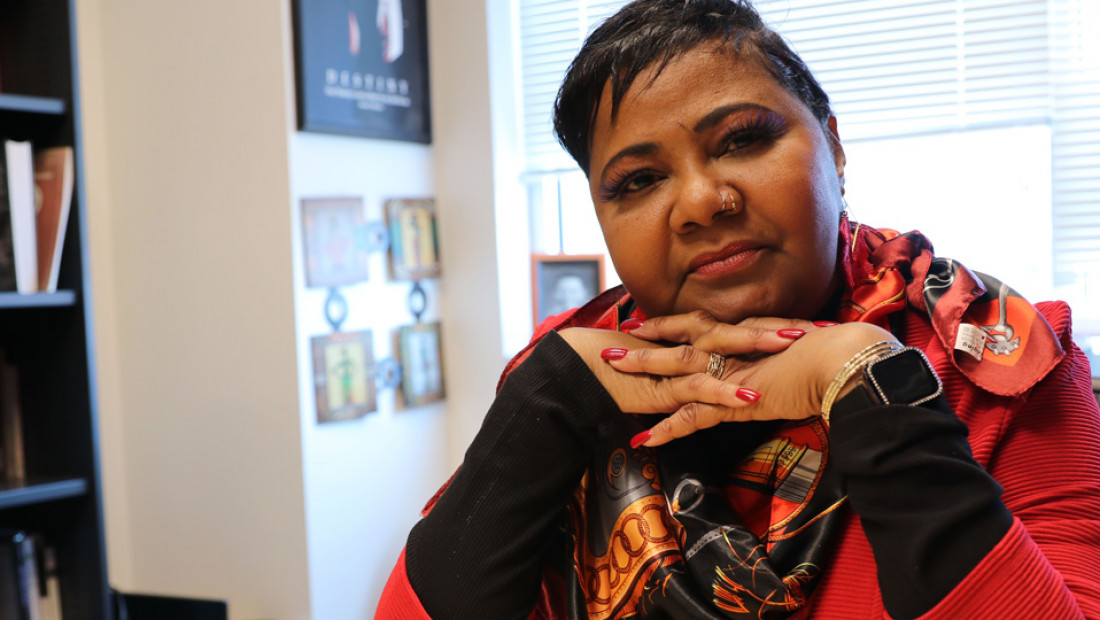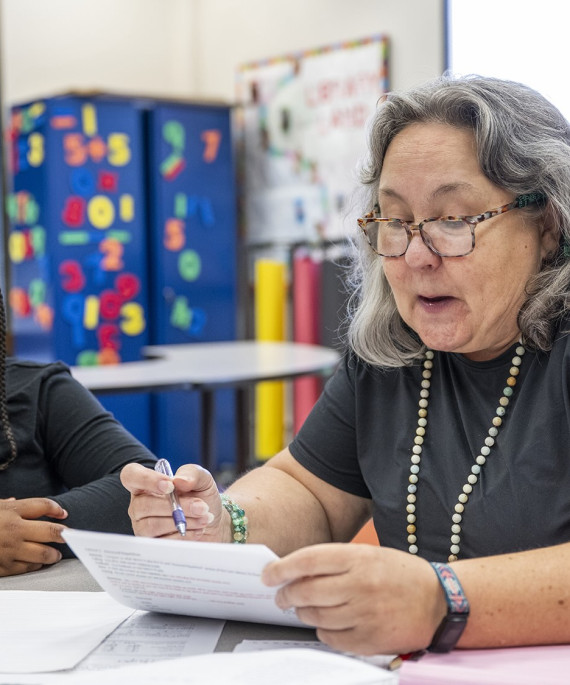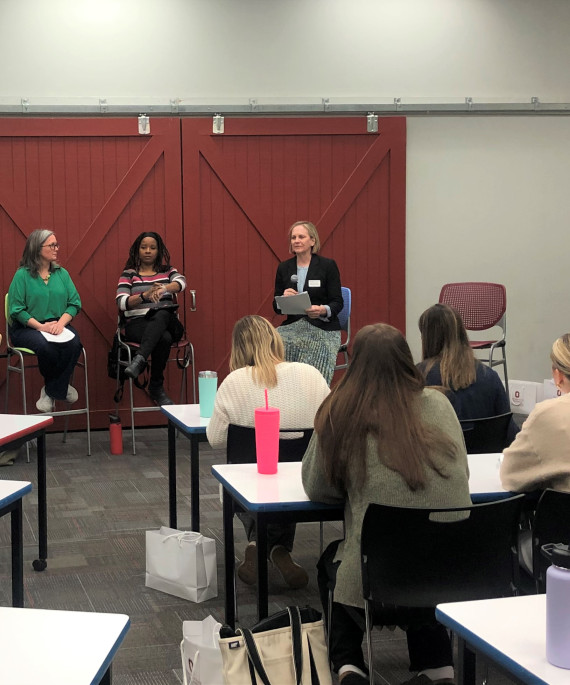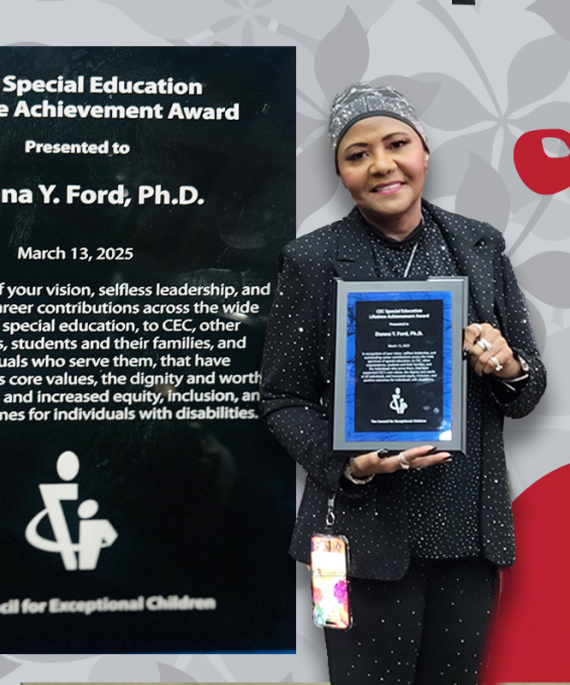
Donna Y. Ford might be the only expert witness in the history of the U.S. Judiciary to administer an IQ test to a federal judge during a trial.
Ford, now an EHE Distinguished Professor in Ohio State’s College of Education and Human Ecology, was not questioning the judge’s competence. She was trying to prove the rigor of the nonverbal test that she says best identifies children — black, Hispanic, Native American and low income — who might not perform well on traditional IQ tests but are still intellectually gifted.
“He was stunned that he could not get the answers,” she recalls. When she told him that many children of color can, she proved her point.
In McFadden versus Board of Education District U-46, Ford testified that the Illinois district used biased tests that skewed results and neglected to test certain populations altogether. Students of color who were selected for gifted education were segregated from whites.
“Specifically, the district made sure that Hispanic and white students never went to classes together, never attended extracurricular activities together,” she said.

Ford offered the court a formula — borrowed from the Equal Employment Opportunity Commission — to decide the minimum proportion of students who should have been identified.
The judge ruled that the district intentionally discriminated against children of color when deciding who received gifted services. The precedent-setting case sent shockwaves through the field and put Ford on a national stage as an advocate for gifted children of all races and ethnicities.
Her formula has become known as Dr. Donna Ford’s Equity Formula. She has penned opinion pieces on gifted education for the New York Times and a host of academic publications. National Public Radio named her Source of the Week in 2017; and the Houston Independent School District asked her to rate its gifted program enrollment. (She gave it a failing grade then offered solutions to fix it.)
On Nov. 8 she received three awards: the Summer Institute for the Gifted Person of Significance Award; the American Educational Research Association’s Research on Women and Education Special Interest Group Award; and the International Colloquium on Black Males in Education Award — so many honors that she had to choose which ceremony to attend.
Ford was a professor of special education at Ohio State from 1997 to 2004. Now she is back, after serving for 15 years at Vanderbilt University’s Peabody College of Education.
She brings expertise in urban and gifted education — and a good measure of dauntlessness — to impact children who otherwise could fade into mediocrity, their contributions never discovered because no one saw their giftedness.
Just as important, Ford is earnestly trying to prevent for others the harm that was done to her as a child from East Cleveland.
A telling backstory
Ford’s office has more bookcases than wall space for them, shelves lined with ceramic figurines and books written by her and others.
After rejoining the college, she had made an Etsy-styled plaque that spells out core values of the college: equity, diversity, excellence, innovation.
“There's this energy that I'm feeling (at Ohio State). I think it definitely comes from the dean's office and administration. I'm happy to see that the values being espoused really match mine. They resonate with me.”
A middle child raised by a single mom, Ford is her own poster child for the work she does. She was moved from first grade to second because she so outperformed her peers. By middle school, she was identified as highly gifted. Her teachers decided to test her for a program that would pay for any private school she chose.
“I passed the test, and they said, ‘We’ve got to save you from East Cleveland.’”
This makes Ford teary eyed, because what followed was anything but a rescue.
She selected an elite all-girls’ school, a 45-minute bus ride from her home. There, Ford discovered that the mansions and Mercedes she’d seen on TV were real. Her classmates carried designer handbags and bragged about European vacations.
“I was lost as hell,” she said. “There was another black girl but she grew up there, was affluent. She was embarrassed by me. And the white girls didn't have anything to do with me.”

She poured herself into school work, which finally challenged her. But one of her teachers accused her of not writing her own papers, consistently harassed her and marked down her grades. Several times an administrator publicly accused her of stealing jewelry.
By this time, Ford said, she hated being black. “I was ashamed of being poor. I was angry with my mom for making me keep going to that school. I was angry that I didn't have any friends, angry that my sisters and others in the neighborhood were jealous and told me I was acting white.”
“I was so miserable and lonely,” she said.
Her mother relented after piecing together a suicide note that Ford wrote and tore up. The next school year, she was back at her East Cleveland high school. She didn’t fit in there, either, and made her teachers promise not to announce her grades for fear the other girls would bully her.
Reclamation, at last
The kid genius finally found her true place in higher education. After dropping out of Case Western Reserve, and having a son she named Khyle, Ford enrolled at Cleveland State. She quickly earned a bachelor’s degree, even as she nursed baby Khyle through deadly Kawasaki’s Disease.
In just 3.5 years, she received her master’s in counseling education, then a PhD in urban education.
“It changed my life,” she said. She learned about racial identity theories and the achievement gap, about gifted education, social capital and the many factors that contribute to poverty.
“And the entire time I'm learning, I'm thinking about that elite private school. And I'm thinking about East Cleveland being so impoverished. I’m thinking about theories of resilience and guilt,” she said. “How did I make it? What was different about me?”
Was it luck, or sheer stubbornness on her part? What did the East Cleveland teachers see in this gifted, low-income black girl that the private school teachers didn’t?
And how do any poor and gifted children of color scale the tremendous barriers standing between them and their potential? Ford wonders what great achievement has been lost — what potential erased — because no one advocated for them.
So, she became their champion. She advocates for training teachers to be aware of their own cultural biases and eliminating teacher referrals for admittance into gifted programs. She rallies against systems that allow rich parents to buy off psychologists who will declare their children IQ-eligible.
At Ohio State, in collaboration with other black female colleagues, Ford plans to develop an annual scholar institute for at least 100 black girls to develop an achievement identity. The two-week institute will be based on her Female Achievement Model for Excellence.
“We teach about academic self-confidence — self efficacy — which is the number one construct,” she said. “I can do it. I can do anything I want to. And then once you say that, ‘I can and I will,’ then nothing can hold you back.”
James L. Moore III, the university’s vice provost for diversity and inclusion and EHE Distinguished Professor of Urban Education, worked with Ford at Ohio State when urban education was a nascent field. The two have collaborated on 20 research articles and have for years remained friends and colleagues.
“Donna is a stalwart in the gifted education field,” he said. “She’s the real deal. To get her from Vanderbilt, that was the biggest coup the college has pulled off in a long time. I’m not saying other people aren’t good. But they’re not Donna Y. Ford.”




